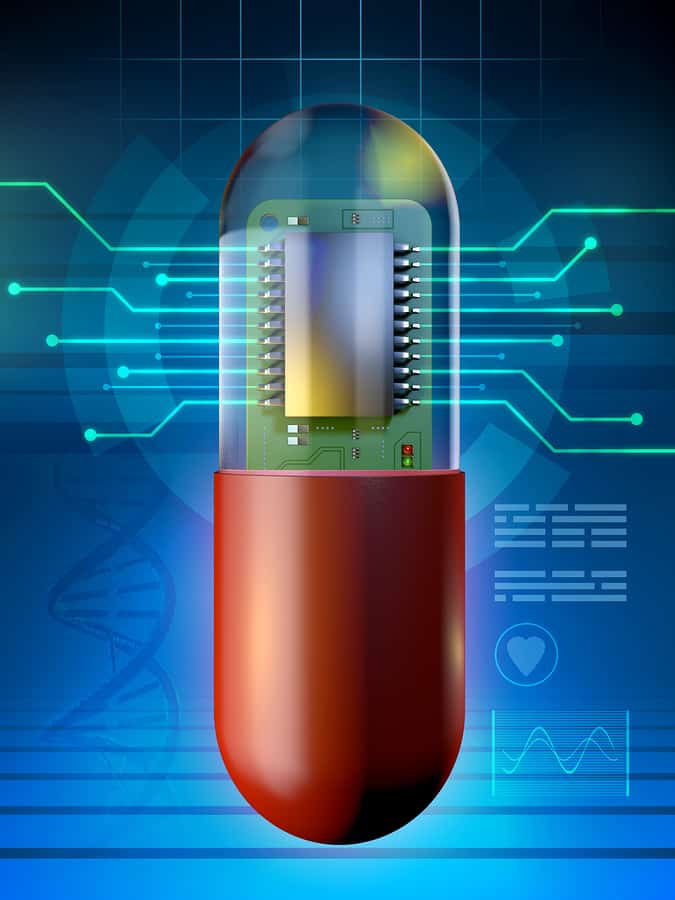If wearable medical technology wasn’t enough to throw your imagination into the blender, we may now be seeing the rise of ingestible medical technologies. In other words, swallowing tiny mechanical objects is no longer The Magic School Bus territory. Instead it’s a real-life medical industry that has just begun to explore its potential.
What is Ingestible Technology?

These devices are small, pill-shaped, presumably water-proof, electronic devices. The current hardware works via Bluetooth technology and connects to wireless devices equipped with particular apps. As Wired has pointed out, these ingestible technologies “don’t do much yet: Mostly they measure pH, temperature, and pressure or monitor whether or not patients have taken their meds.” Still, the presence of a completely non-invasive yet (in a manner of speaking) entirely invasive medical device like this could really change how people monitor their baseline health.
One ingestible technology recently developed at MIT acts as a smart-release medicine delivery device. The device begins as a pill, but once swallowed, little robotic arms swing out to keep it in the stomach. This is according to MedGadget, who also report that “after about a month or so, the arms break off and the individual parts of the device can safely exit the body.” This is an important development, as getting patients to take their medication at the correct intervals is very difficult, and obviously very important for recovery. But beyond just releasing medicine at regular intervals, this ingestible technology monitors the condition of the body it’s in, and releases medicine accordingly.
The Future of Ingestible Tech
“Our system could provide closed-loop monitoring and treatment, whereby a signal can help guide the delivery of a drug or tuning the dose of a drug,” says MIT visiting scientist Giovanni Traverso, according to MIT News. It’s kind of like a surveillance camera, only inside you. And 3-D printable.
According to the Wired article, a big hurdle for the ingestible technology industry is power supply. But researchers are fast pursuing answers to that question. Recently, using a battery powered by stomach acids has been offered up as a solution. No doubt, this industry, which Business Wire reports is expected to grow by over 20% by 2023, is set for some very big, or rather micro-scopically small, developments.



